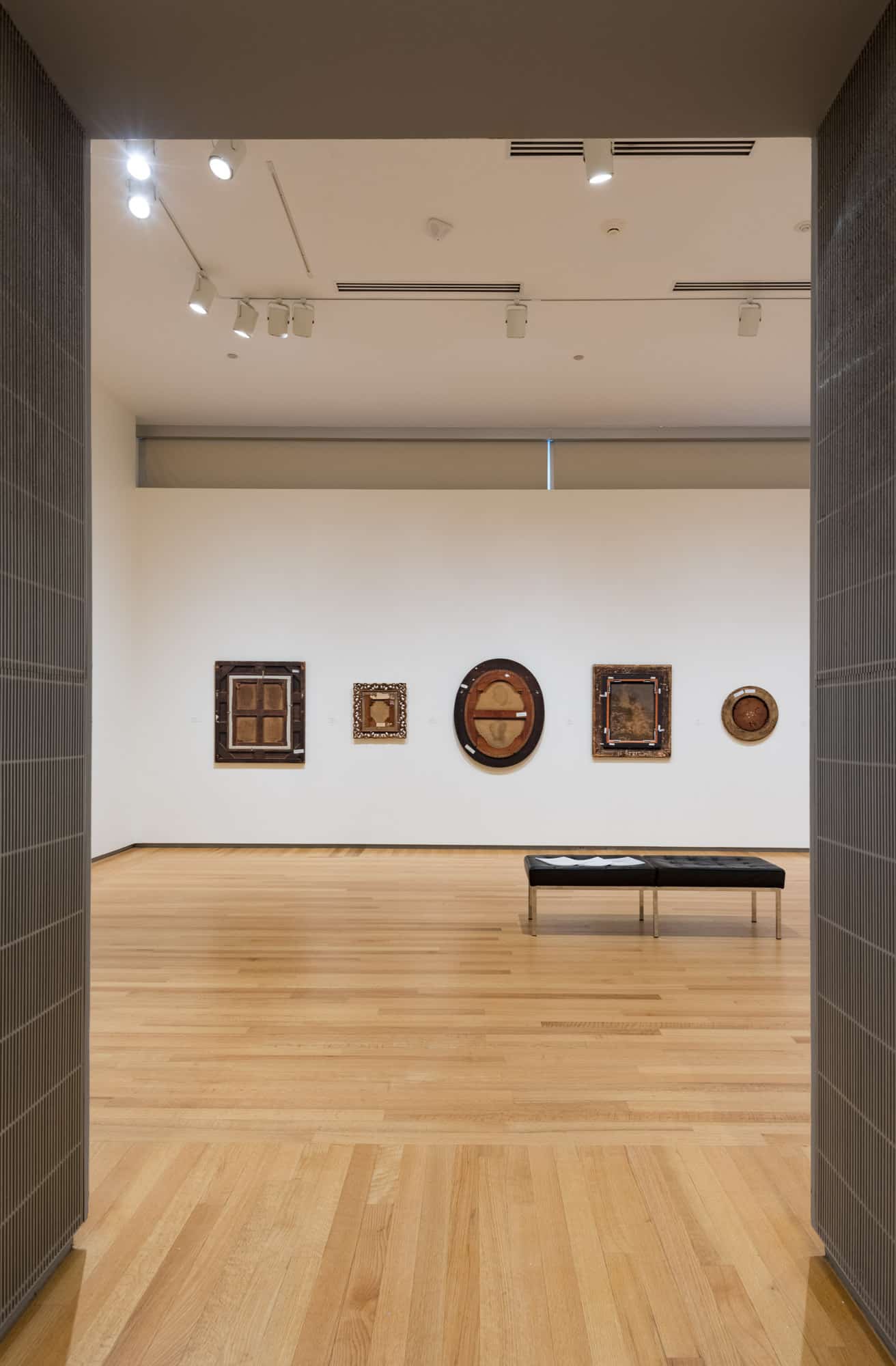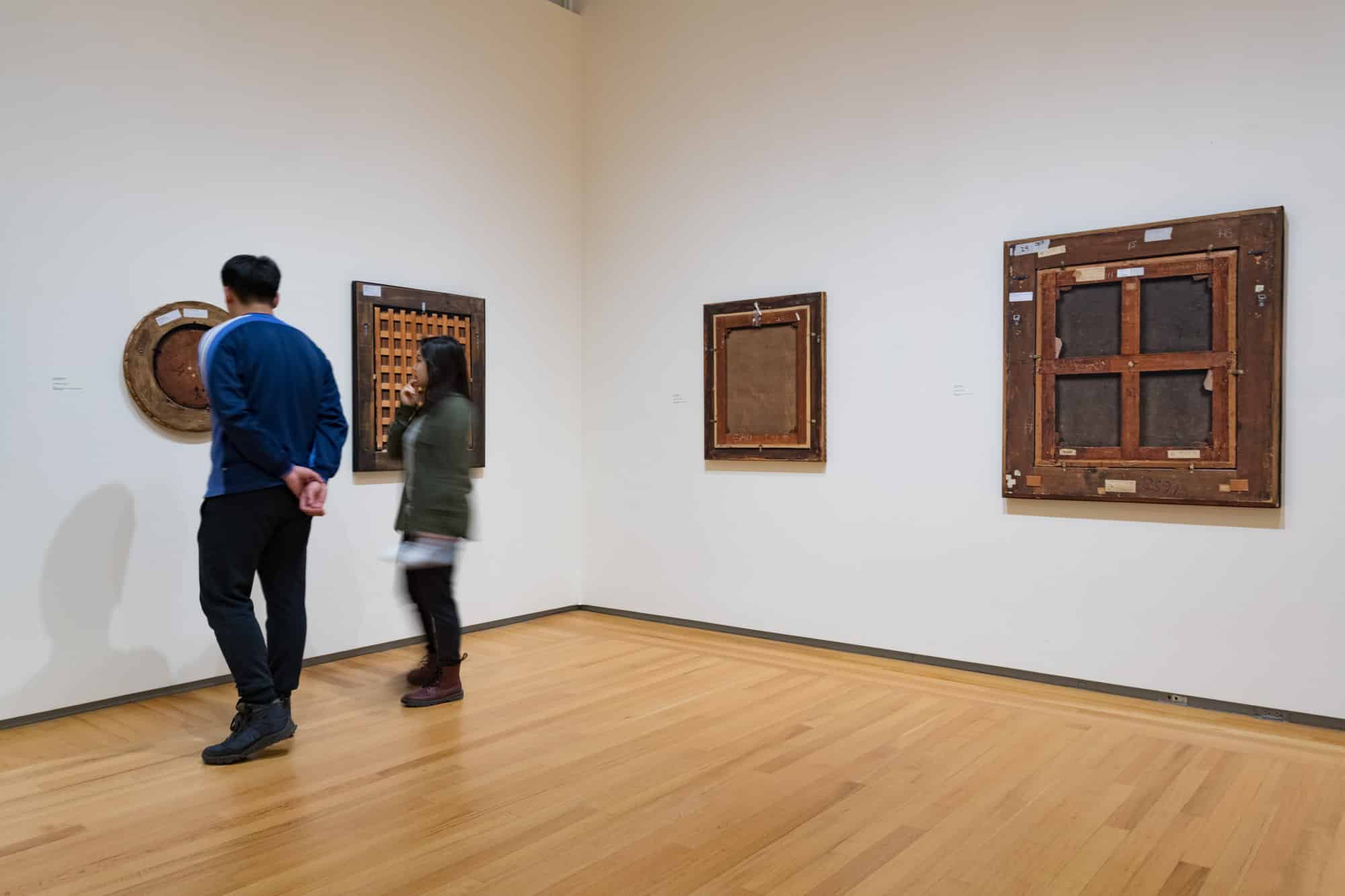Montreal-based photographer Paul Litherland offers unprecedented access to the little-seen “back sides” of paintings from the Agnes’s historical European collection in B-Side Agnes Etherington. Here, Kate Yüksel, Communications Coordinator, chats with the curator of the exhibition, Dr Jacquelyn N. Coutré, Eleanor Wood Prince Associate Curator of European Painting and Sculpture before 1750, Art Institute of Chicago.
B-Side Agnes Etherington: Paul Litherland quickly became a favourite to in-gallery and online visitors. Why do you think the exhibition has been so popular?
I attribute that to Paul’s incredible ability as a photographer. I’m told that people enter the show and think that these photographs are actual paintings hung backwards on the wall. Their highly illusionistic details—from the shadow cast by a hanging wire or the rippled texture of a backing board—beguile visitors. How often are we really fooled by images today, with our sophisticated technology? I think we respect, and appreciate, the artist who can trick us.

Installation view of B-Side Agnes Etherington: Paul Litherland.

Visitors enjoy B-Side Agnes Etherington: Paul Litherland.
Was there a first B-Side that inspired the exhibition?
When the Agnes acquired Herman Verelst’s Portrait of an Unknown Woman in 2017, I was particularly interested in the numerous labels and inscriptions on the verso. They seemed like pieces of a puzzle that contained information about the portrait’s provenance and sitter that remained elusive and mysterious. I knew that Paul had an ongoing project photographing B-Sides (at the Leonard and Bina Ellen Art Gallery of Concordia University, for instance), and I thought this new portrait was the perfect opportunity to invite him to present the next iteration at the Agnes.
What is so appealing about the back side of these paintings?
I think B-Sides appeal for a variety of reasons. Foremost, they are elements of artworks that remain hidden from museum visitors, and all of us like to, metaphorically speaking, see behind the curtain. Secondly, the versos reveal very clearly that these paintings, while of high cultural and artistic value, are physical objects with dramatic histories. Paintings created in 1600 have had a number of transformative experiences over their four-hundred-year lives, from hanging near smoky fireplaces to being trimmed to fit a new frame to being identified as by the hand of an artist other than the one who made it. Labels and inscriptions, springs and hooks are all lingering traces of the events and people that have touched these paintings. B-Sides are almost archeological in that sense, with layers of history to be peeled back. Finally, they can be incredibly beautiful, possessing a visual rhythm all their own. As Paul has said, the front is the precious side. The back, I would argue, is the down-and-dirty, informative side.
Three of the works featured in B-Side are on view in the adjacent exhibition From Tudor to Hanover. Was this considered when planning?
I had been thinking about a contemporary intervention in the historical European collection for some time. The acquisition of the Verelst portrait, which was also the impetus for the British portraits show, offered the perfect moment for a B-Sides show to dovetail with a historical European exhibition. Unfortunately, the Verelst didn’t make it into the final B-Sides exhibition; there were more beautiful photographs than we could fit into the gallery! But the overlap between the two shows is important, I think. It demonstrates how historical art can engage with our contemporary world in inspiring ways.
Working with a living artist means that those stories must reflect two perspectives, the artist’s and mine.
Is this your first time working with a contemporary artist? Can you tell us about this experience in comparison to what is more usual for you?
It is indeed my first time working with a contemporary artist, and Paul was a gracious and forgiving partner in the process! As the curator of an exhibition of historical European art, I typically determine which stories are told in the gallery by refining the theme of the show, making thoughtful choices about the checklist of objects, and being deliberate about constructing a dialogue between objects within the exhibition space. Working with a living artist means that those stories must reflect two perspectives, the artist’s and mine. Paul and I collaborated on all aspects of the show, from selecting the paintings to be photographed to deciding which photographs to print to arranging the work in the gallery. I learned a great deal about his motivations and artistic voice through in-person conversations, emails and phone calls over the last year and a half. Without a doubt, it was a tremendously illuminating and rewarding experience for me.
Anything else that you think audiences should know?
The idea of the B-Sides project was actually born at the Agnes, when Paul visited in 2007 to document the front and back of the new Rembrandt painting, Head of a Man in a Turban (Study for a Rabbi?), for the Agnes’s records. It is very exciting to feature his art at the institution where this body of work was conceived.